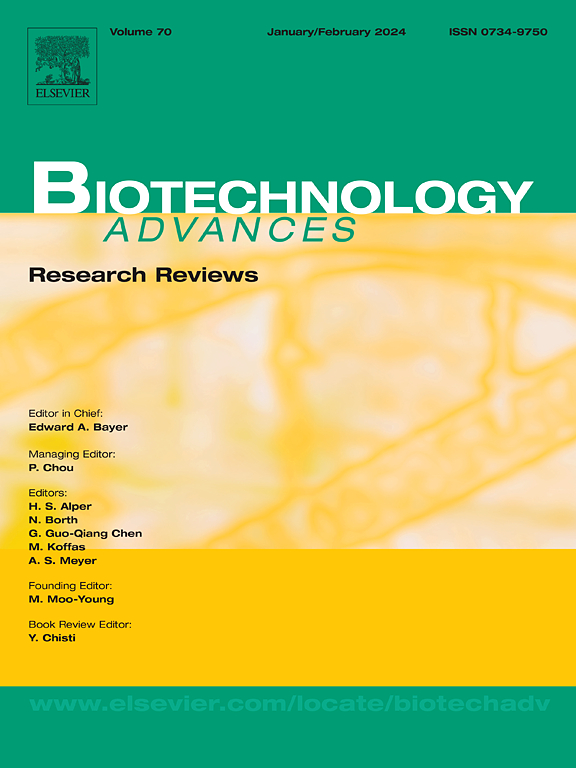预测生物催化中的机器学习:方法和应用的比较回顾
IF 12.5
1区 工程技术
Q1 BIOTECHNOLOGY & APPLIED MICROBIOLOGY
引用次数: 0
摘要
近年来,机器学习极大地推进了预测生物催化,使酶功能预测、生物催化剂发现、反应建模和代谢途径优化的创新方法成为可能。这篇综述提供了当前方法的比较分析,突出了预测生物催化应用中计算工具和生化数据之间的交集。主要内容包括酶分类、反应注释、酶-底物特异性、反应结果和动力学参数预测。我们讨论了各种机器学习方法,如深度增加的神经网络、卷积网络、基于图的架构和变压器模型,并强调了它们各自的优势和局限性。大规模数据、表征和特征技术以及强大的验证方法的集成加速了酶的发现和生态友好、可持续生物催化过程的发展。在未来,机器学习有望在将计算洞察力与实际酶工程工作联系起来,推进合成生物学,代谢工程和绿色生物催化方面的应用方面发挥核心作用。本文章由计算机程序翻译,如有差异,请以英文原文为准。
Machine learning in predictive biocatalysis: A comparative review of methods and applications
In recent years, machine learning has significantly advanced predictive biocatalysis, enabling innovative approaches to enzyme function prediction, biocatalyst discovery, reaction modeling, and metabolic pathway optimization. This review provides a comparative analysis of current methodologies, highlighting the intersection between computational tools and biochemical data for predictive biocatalysis applications. Key aspects covered include enzyme classification, reaction annotation, enzyme-substrate specificity, reaction outcomes, and kinetic parameter prediction. We discuss various machine learning approaches, such as neural networks with increased depth, convolutional networks, graph-based architectures, and transformer models, highlighting their respective strengths and limitations. The integration of large-scale data, representation and featurization techniques, and robust validation methods has accelerated enzyme discovery and the development of eco-friendly, sustainable biocatalytic processes. In the future, machine learning is anticipated to play a central role in connecting computational insights with practical enzyme engineering efforts, advancing applications in synthetic biology, metabolic engineering, and green biocatalysis.
求助全文
通过发布文献求助,成功后即可免费获取论文全文。
去求助
来源期刊

Biotechnology advances
工程技术-生物工程与应用微生物
CiteScore
25.50
自引率
2.50%
发文量
167
审稿时长
37 days
期刊介绍:
Biotechnology Advances is a comprehensive review journal that covers all aspects of the multidisciplinary field of biotechnology. The journal focuses on biotechnology principles and their applications in various industries, agriculture, medicine, environmental concerns, and regulatory issues. It publishes authoritative articles that highlight current developments and future trends in the field of biotechnology. The journal invites submissions of manuscripts that are relevant and appropriate. It targets a wide audience, including scientists, engineers, students, instructors, researchers, practitioners, managers, governments, and other stakeholders in the field. Additionally, special issues are published based on selected presentations from recent relevant conferences in collaboration with the organizations hosting those conferences.
 求助内容:
求助内容: 应助结果提醒方式:
应助结果提醒方式:


